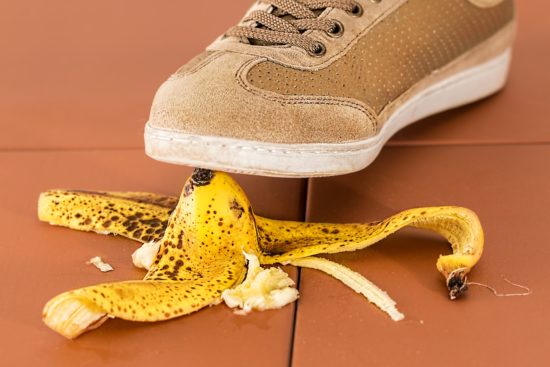
A manager’s responsibility includes risk management. There are many components to risk management, most of which are on the anticipatory or preventative side. But there are post-incident techniques and practices that should be followed. This article addresses post-incident practices involving a slip and fall or trip and fall accident. The basic goal is to gather and preserve information to avoid or reduce risk later.
There are many incidents that will never turn into a lawsuit. But when an incident does turn into a lawsuit, factual details and reliable evidence matter. Because of many factors, such as the length of time for injuries to heal, delay associated with insurance investigations or payments, delay in retaining attorneys, and multi-year legal time limits within which to file a lawsuit, it can be several years between an incident and the ensuing lawsuit. Associations are frequently prejudiced by the loss of information which could have been easily preserved at the time of the incident. Capturing that information early in the process will help the association eliminate or reduce its liability from an accident. It is extremely difficult, if not impossible, to re-create or reconstruct such details several years later.
There are many incident report forms that provide guidance for the types of information which should be preserved as soon as possible. Basic identification data such as complete names, addresses, phone numbers, the role of the persons in the incident, etc. should be written down. The precise location of the incident should be documented. The recorded Information is not “down behind the garage”, but “25 feet from the southeast corner of garage unit XX, approximately 6 inches from the curb.”
If possible, take photographs of the incident and the person involved from all angles. Identify within the file who took the photograph and when it was taken. If the opportunity exists, promptly photograph conditions after the incident. This is especially valuable and critical with rapidly changing conditions such as a hail storm, accumulating snow, or melting ice.
If possible, get the involved persons and witnesses to write out or email specific statements about what happened. If that is not possible, obtain their version of events, and write the statement yourself. If there is some other involved entity or party, secure their information. For example, if it is a slip and fall incident on an icy or shoveled sidewalk, ascertain who was the contractor providing snow removal services, determine the name of the person who was last out at the property, and find out exactly when they had previously maintained that area. If there is a bystander witness, obtain their complete information, including home and work addresses and phone numbers.
If a person is taken away by ambulance, or if the police responded, obtain the name of the ambulance service, and vehicle number, and the names, badge numbers, and telephone numbers of the EMTs, the police officers, etc. Details matter. Consider the difference in quality between: “she slipped and fell on the sidewalk” and: “she was wearing flip flops and carrying her child, and slipped and fell when her dog ran underfoot.” Both are true. Which one is more helpful to the association?
You may later learn about an insurance adjuster on behalf of either a victim or the association. The claim adjustment report gets filed away in the insurance company’s records. But if you don’t record the name of the insurance company, the name of the adjuster, and the address, claim number, and phone number, the association may not have the ability to recall the adjuster or the insurance company if suit is filed two to three years later. This is especially true if the association changes insurance companies, insurance agents, or managers.
Realization, identification, and preservation of key facts take no more than 30 to 60 minutes. It may seem bothersome at the time, but it will save hours and days of investigation later on, and those details may help to exonerate the association or to shift responsibility to a third-party. The devil is in the details.